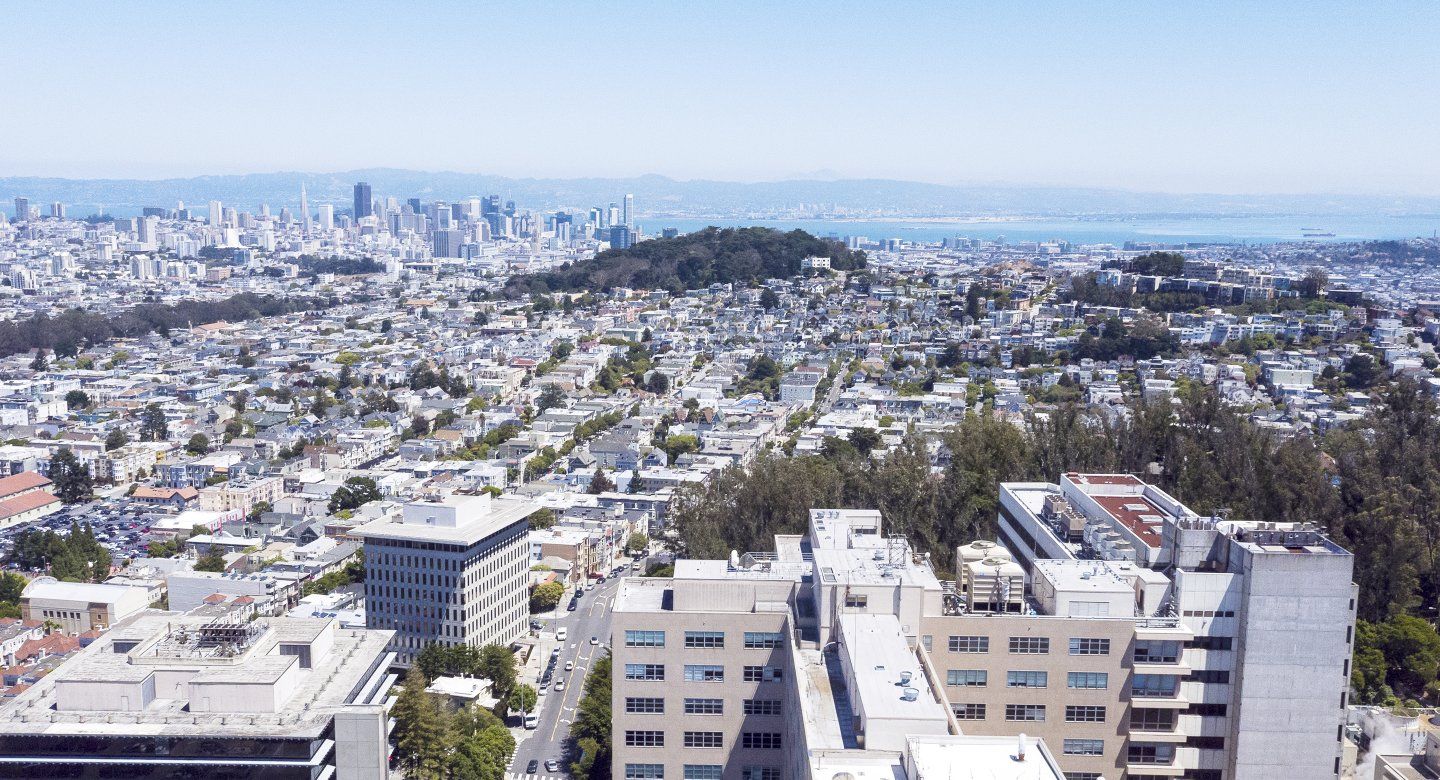Initiative Will Leverage UCSF’s Economic Power to Promote Health Equity in San Francisco
Building on its 150-year public service mission, UC San Francisco announced its intention to leverage more of its economic power and collaborative partnerships to improve the long-term health and welfare of communities in its own hometown.
With the release of a new report, UCSF is joining a growing national movement to establish “anchor institutions” – universities and hospitals that are doubling down on their commitment to strengthen and support under-resourced populations – by hiring, buying and investing locally.
In declaring its intention to become an anchor institution – one that is anchored to its community and committed to its long-term health and viability – UCSF aims to capitalize on its position as the second largest employer in the city and its economic impact as a $7 billion enterprise to promote health equity through targeted efforts in three key areas: workforce development, procurement and community investment.
The report represents the first step in implementing a long-term strategy to harnessing UCSF’s collective power to address social determinants of health and move the needle on advancing health equity in San Francisco. UCSF is also looking to join with other institutions in San Francisco and the Bay Area to grow awareness of, and involvement in, a regional anchor institution network.
With a long history of successful partnerships with community-based organizations, the City and County of San Francisco, industry, academic and health care institutions, UCSF is well positioned to expand upon the contributions it already provides to local communities through its mission-driven scientific research, life-sciences education, patient care and public service.
The report documented many ways UCSF is already acting as an anchor institution, with programs designed to train community members for jobs at the University, and programs looking to boost health equity or build a pipeline of students interested in pursuing education and careers in health sciences. The focus now is integrating some business and operational practices in the areas of workforce development, purchasing and investing to benefit local communities.
The report, “Advancing Health Equity in San Francisco: Assessing UCSF’s Anchor Institution Capacity,” takes a broad look at the University’s strengths, weaknesses, opportunities and challenges as it considers actions it can take to further contribute to addressing the citywide landscape of disparities and inequities.
Jointly funded by UCSF and the San Francisco Foundation, the report is the culmination of a yearlong effort involving 50 interviews, extensive research of citywide health and economic disparities and guidance from an 18-member Anchor Institution Assessment Steering Committee comprising of stakeholders inside and outside of San Francisco.
For UCSF Chancellor Sam Hawgood, MBBS, the idea of UCSF cementing its status as an anchor institution is directly aligned with two of his top priorities – forming transformative partnerships and championing equity and inclusion.
“As an institution with deep roots in San Francisco, UCSF thrives because of its connection to this great city and the collaborations we have formed over more than a century,” Hawgood said. “This new report gives us a roadmap with recommendations that we will explore over the next few years to determine how we can continue to make a difference in underserved communities.”
In accepting the report, Chancellor Hawgood and his leadership team endorsed the report’s recommendations to:
- Increase its capacity in workforce development to train, hire, and promote people from under-resourced populations;
- Direct more of its $1 billion in annual spending to purchase goods and services from small, local businesses that are owned by or employ under-resourced populations; and
- Explore opportunities to invest in activities that directly contribute to improving the lives of those living in under-resourced communities.
A Sense of Urgency
While the regional economy has experienced unprecedented growth in recent years, this prosperity has not reached all segments of the population. Significant disparities and inequalities in health outcomes exist for San Francisco’s under-resourced communities along racial, socioeconomic and geographic lines, placing residents and families at risk.
As two institutions that share values of equity and social responsibility UCSF and the San Francisco Foundation joined forces out of a sense of urgency and desire to reverse the city’s growing economic and health inequities and disparities.
The anchor institution initiative represents an acknowledgement that providing access to health care alone is not enough: People’s race, socioeconomic status, education and other factors are all significant factors or determinants of health.
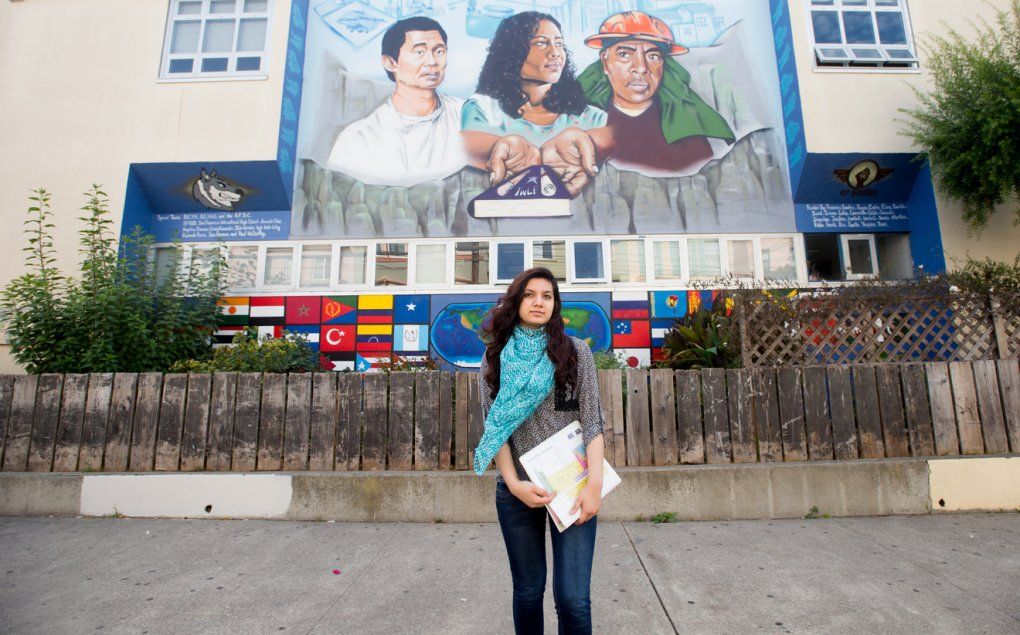
Mishal Durrani, a UCSF Science & Health Education Partnership (SEP) intern, stands in front of San Francisco International High School. SEP has a 30-year history of supporting science and health education in the San Francisco Unified School District. Photo by Noah Berger

During a topping out ceremony, Martin Cortes – a construction contractor who helped to erect the Precision Cancer Medicine Building – signs the project’s final steel beam before its installation. Photo by Susan Merrell
Fred Blackwell, chief executive officer of the San Francisco Foundation, said the foundation is eager to see economic conditions improved in critical communities of color in San Francisco by engaging large organizations like UCSF.
“This is about changing the economic trajectory of families that are living in these marginalized communities and making sure that we’ve got the right kinds of connections and opportunities for them to experience higher levels of economic mobility,” Blackwell said. “So when UCSF approached us about its interest in being an anchor institution in the city and using that to create better connections between the institution and these communities, it was a no-brainer for us to support a planning effort to make that happen.”
Blackwell has seen universities and health care organizations across the nation establish anchor institution initiatives to help struggling communities in their cities. He is optimistic that UCSF can do the same in San Francisco and hopes that UCSF could serve as a model for other large employers to join the effort.
“If UCSF were at the center of a collaborative of large employers that are willing to do the same, it could be pretty powerful in terms of the transformation that we’re looking for,” Blackwell said.
A Major Economic Impact
As a $7 billion enterprise employing more than 27,000 people, UCSF has a significant impact on the San Francisco Bay Area economy. A report in 2016 found that the University then had an economic impact of nearly $9 billion in the Bay Area and helped create 42,700 jobs – in addition to its own employees, contractors and others whose business serve UCSF.
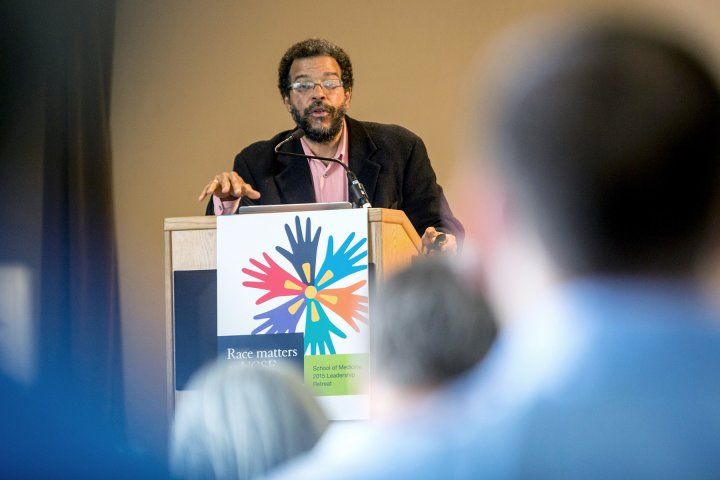
Howard Pinderhughes, PhD, speaks at a 2015 School of Medicine retreat, where he first pitched the idea of UCSF becoming an anchor institution. Photo by Elisabeth Fall
The anchor institution concept has gained popularity in recent years, according to Howard Pinderhughes, PhD, a professor in the UCSF School of Nursing, who pitched the concept of UCSF becoming an anchor institution at a School of Medicine retreat in 2015. Since then, numerous entities around the country, including Cleveland Clinic in Ohio and Rush University in Illinois, have signed on to the concept. Pinderhughes and Wylie Liu, executive director of UCSF Center for Community Engagement, who co-led the assessment report, continue to learn from this growing network of anchor institutions.
“Part of our motivation in the anchor institution initiative was our longstanding desire and increasing commitment to positively impact the health of the most under-resourced and underserved communities in San Francisco,” Pinderhughes said. “On top of that, one of the primary missions we’ve taken on is to increase health equity in San Francisco.”
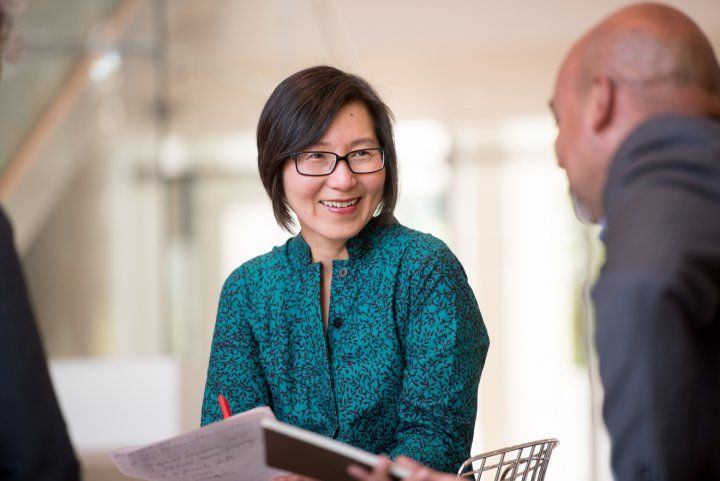
Wylie Liu, executive director of the UCSF Center for Community Engagement, speaks with colleague Roberto Vargas. Photo by Barbara Ries
Most commonly, anchor institutions seek to use their size and economic clout to help impoverished communities through hiring, purchasing and investment. The thinking is, because the institution employs a large workforce, buys a lot of goods and services, and invests so much of its endowments, it could focus its efforts in communities where it would help change the economic equation.
Opportunities for Impact
Even with its wide array of public service efforts, the report cited areas where UCSF has an opportunity to do more, and it highlighted many other ways that the city’s marginalized communities are struggling even as San Francisco experiences a tech-fueled economic boom. Importantly, expanding partnerships will help look to minimize redundancy, use resources more efficiently and identify and fill in gaps to maximize the collective impact on the social determinants of health of under-served people in San Francisco.
Monique LeSarre, PsyD, executive director of the Rafiki Coalition for Health and Wellness, which is dedicated to eliminating inequalities in San Francisco’s black and marginalized communities, is an incoming co-chair of the newly reconfigured UCSF Anchor Institution Steering Committee, which will guide the work going forward.
“We have chronic social inequities and massive health inequities already, and we have UCSF here with possible ways to help, including jobs, training, expertise and research,” LeSarre said. “The anchor institution recommendations provide the opportunity and the pathway to do it.”
LeSarre emphasized that the effort to help any community must involve that community. She noted that UCSF, particularly through the development of its 60-acre Mission Bay campus over the past two decades, has exacerbated inequities with the Hunters Point and Bayview neighborhoods just to the south. San Francisco, she said, represents “a tale of two cities.”
“We don’t want UCSF to come in and rescue anybody,” LeSarre said. “Our communities want to heal and get better. We want jobs and work and to feel confident and competent. We are ready to get to work.”
Interventions outlined in this initiative will not be a quick fix. The problems facing poor people of color “is based upon systemic oppression and structural racism,” she said, and will take years to combat.
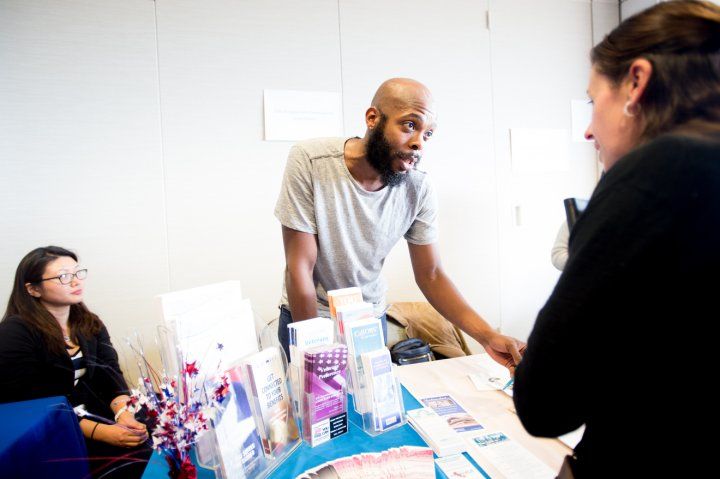
Gregory England of the Employment Development Department (EDD) speaks with an attendee at a Veterans Job Fair and Open House. Photo by Susan Merrell
Pinderhughes agrees. He is adamant about being as transparent as possible in addressing the problems facing San Francisco. The report is intended to promote honest and meaningful conversations among the internal UCSF community and the community at large about how to strengthen UCSF’s policies and practices to advance health equity in San Francisco, starting with the most under-resourced communities.
“For this initiative to be effective, for UCSF to be a catalyst for change, we are going to have to partner with community organizations to deliver on a place-based plan with solutions that can improve the long-term health and welfare of our underserved and diverse communities,” Pinderhughes said.
He views the value of this report going beyond UCSF and – with the involvement and expertise of the San Francisco Foundation and other community partners – can serve as a blueprint for San Francisco’s other major institutions. In the long-term, UCSF will look toward forming a citywide anchor network and developing a San Francisco Bay Area regional strategy to strengthen communities.
Over the short term, UCSF’s anchor institution initiative will focus on expanding and scaling workforce development efforts, setting targets and tactics for procurement, and exploring investment options. The initiative will be administered through the office of Paul Jenny, senior vice chancellor of Finance and Administration, who has been an executive sponsor of the initiative, and guided by the UCSF Anchor Institution Steering Committee.
Members within the UCSF community or community at large who would like to get involved in this effort and/or receive email updates, may send an email to [email protected].
Anchor Institution Report Recommendations
UCSF Workforce Development
• Increase UCSF’s capacity to train, hire and promote under-resourced populations
• Strengthen UCSF’s workplace climate and cultural competency
• Increase collaboration between and across community partners and stakeholders
• Increase effectiveness of the education pipeline for under-resourced populations
UCSF Procurement Recommendations
• Define UCSF’s movable spend (purchasing categories that an be sourced from small, local businesses that are owned by, or that employ, under-resourced populations
• Institutionalize local and inclusive purchasing through the adoption of explicit goals, policies and practices
• Identify local business capacity to meet movable spend
• Connect with local businesses and support capacity-building activities
UCSF Community Investment Recommendations
• Assess existing UCSF investment landscape
• Develop a UCSF Community Investment Strategy with community input
• Build internal and external relationships
